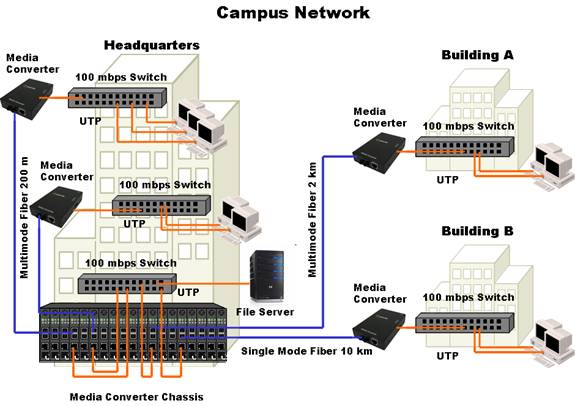Media Converters in Campus Networks
Media Converters enable long distance data transfer in Campus Networks
A Campus Network is a LAN environment made up of multiple buildings that generally connect into a common central data center. Businesses and academic institutions faced with this infrastructure must be capable of connecting these multiple locations and spanning longer distances than copper cable setups can handle.
Media Converters proved the optimal solution for such environments by allowing organizations to establish optical cabling infrastructure between buildings and connect it to the copper Ethernet infrastructure inside the locations where it makes more sense as a cost-effective solution.

Typically, campus environments use fiber-optic cabling infrastructure to support connections between buildings, as they not only enable data traffic over longer distances, but are also more resilient to outdoor weather conditions and electromagnetic interference (EMI). This creates an environment where the inter-building optical network is essentially an extended version of the backbone infrastructure.
The use of chassis-based media converters is a cost effective means of providing fiber connectivity in a campus network. By consolidating Ethernet to fiber conversion in a rack mount media converter chassis, various types of fiber links can be brought into a central data center. This simplifies deployment and maintenance and also provides a scalable means to grow the network as needed. The end-to-end copper to fiber, multimode to single mode or multimode to multimode solution can be achieved by pairing media converter modules in a high density chassis with another chassis, or standalone media converters in the remote buildings
Using media conversion to enable such a setup is critical as more businesses are emphasizing their network infrastructure and focusing on performance as a competitive advantage over other organizations in their sector. This is prompting more frequent upgrades, creating an environment where businesses can benefit substantially from the ability to build upon existing infrastructure through media conversion.